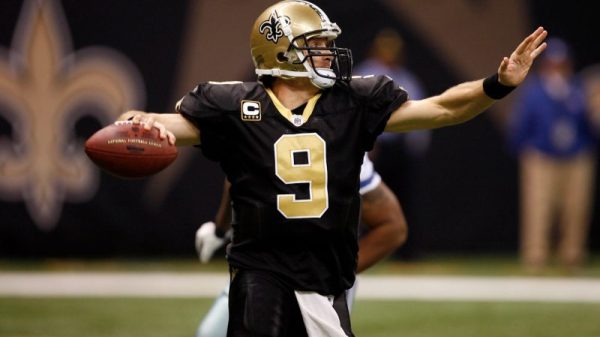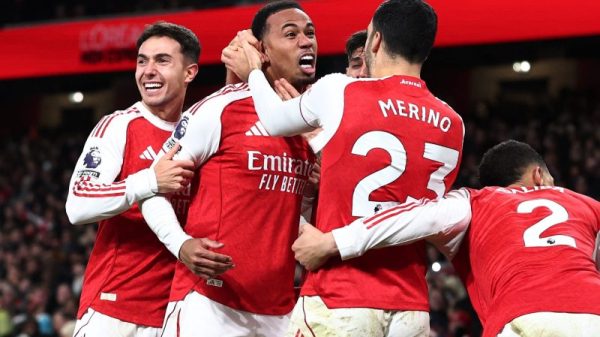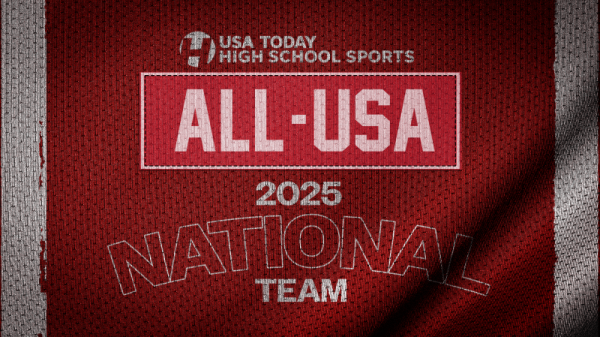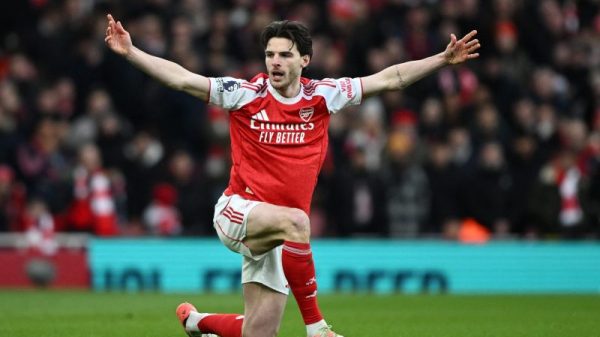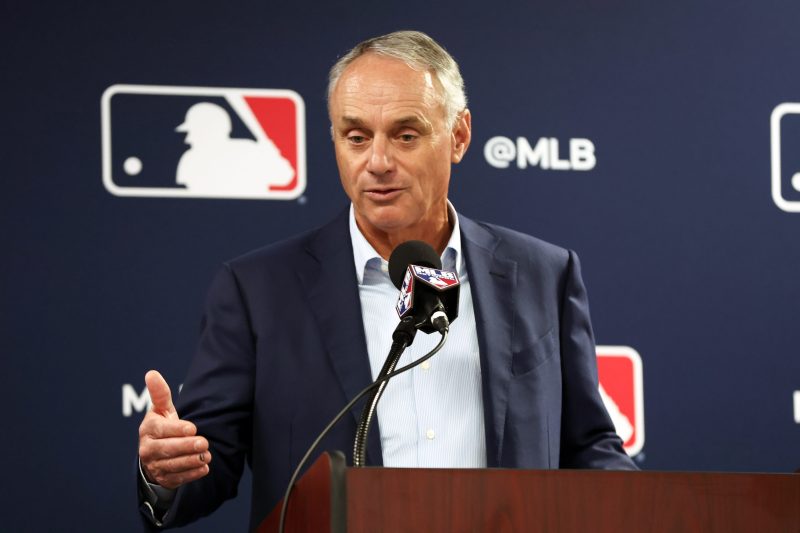TAMPA, Fla. — Major League Baseball commissioner Rob Manfred touched down at spring training on Thursday, sharing a short flight with team executives and meeting the media. And in the short term, with visions ranging from Scottsdale to Seoul to the Deep South, there was little to dim the customary spring-training wonder for the 2024 season ahead.
Yet peeking further down the road provides a different view, to a 2025 landscape that may see significant disruptions.
The chasm dividing the modern consumer and the manner in which MLB consistently generates some $11 billion in annual revenue — largely through multi-billion dollar national and local TV contracts — is nearing the point of rupture.
Decades of passive cable TV revenue from cable subscribers that easily passed from ESPN and Fox’s coffers on to MLB is about to hit a detour — in the form of a streaming alliance forged between the two network behemoths, their respective sports cable channels and Warner Bros. — all national rightsholders.
Manfred himself hopes to launch a direct-to-consumer in-market streaming product for an estimated 14 teams that would both stanch the revenue bleed from teams ravaged by the Diamond Sports bankruptcy while also nudging baseball closer to modern consumption — although whether such a product would generate sufficient revenue remains in question.
HOT STOVE UPDATES: MLB free agency: Ranking and tracking the top players available.
Throw in one self-inflicted wound — the fact that, nearly a year out, the Oakland Athletics do not know where they’ll play baseball in 2025 — and Manfred and the 30 owners for whom he works will be consumed by plenty beyond the white lines.
Perhaps most notably: Luring a significant media partner willing to pour the millions to billions of dollars into Manfred’s streaming gambit — keeping the revenues streaming and cord-cutting fans’ homes gleaming with baseball.
“Longer term, our goal is to preserve what is the remainder of legacy cable bundle,” says Manfred Thursday at a Grapefruit League media event held at the Yankees’ spring complex. “The economics of that bundle are really important to us. There are some people — including Rob Manfred — who will be clutching that cable remote until I die.
“I do, however, recognize that there are a lot of people — for reasons completely unrelated to baseball or any kind of programming, for fundamental economic reasons — who opt out of that cable bundle. We have to serve those people.
“Put the economics to one side. It’s a question of reach. You’ve got to get the games in the household. And the economics of the broadcasts — in some ways, it is secondary to the rest of our business. If there’s a house where there are young kids and they’re cord-cutters and there’s no way to watch baseball — it’s unlikely those kids will be fans and ask their parents to go to a game live.”
The search for a media partner to drive this distribution — and this revenue — is already underway. Manfred acknowledged that the “digital side of the house” is not necessarily going to be owned and operated by MLB.
And he hinted that his phone has been ringing from entities (one guess: You’re likely already paying them in some form for entertainment) eager to team up on Manfred’s streaming venture.
“Just like on the broadcast side,” he says, “we have, already, significant interest from major partners that would alter the economic proposition of that digital offering in a significant way.”
While it’s not likely such a streaming house would have all 30 teams under one roof — the Yankees and Dodgers and Mets, after all, rake in plenty of money on their own relative to the Twins and Marlins — a centralized solution probably can’t come soon enough.
‘It did create uncertainty’
With the bankruptcy of Diamond Sports — which operates the Bally’s networks that hold rights to dozens of pro sports teams — MLB is already producing the broadcasts for the Padres, Diamondbacks and Rockies.
The Guardians, Twins and defending World Series champion Rangers are homeless come 2025, and would likely be MLB-produced, as well.
In an industry that has veritably printed money from its local broadcast deals, the reality has been sobering, particularly for teams like Cleveland and Minnesota that reside outside of major markets.
The Twins are hardly cheap for their market, committing $200 million to shortstop Carlos Correa last winter, won the AL Central and defeated the bigger-bucks Toronto Blue Jays in the wild-card round.
Yet as they entered the off-season, the Twins had no carrier. Diamond Sports took them on for one more year, but the future beyond that is uncertain, save for MLB adding them to the in-house production list.
This off-season, there was no spending spree, just the loss of free agent All-Star pitcher Sonny Gray and the trade of All-Star second baseman Jorge Polanco.
“For us, it did create some uncertainty,” Derek Falvey, the Twins’ president of baseball operations, said Thursday. “And there was new information, it felt like, two to three weeks, about what might happen and what the next solution would be. For ownership more than anything, it left a little bit of a blank space in terms of what this means going forward and impacted some of our decision-making.
“We have some clarity on this year, but what that means for ’25 and beyond is unclear. We just have to take it step-by-step.”
Yet at least the Twins know where they’re going to play.
An ‘adequate’ Vegas situation
The many unusual or borderline inept maneuverings surrounding the A’s planned move to Las Vegas are more or less A’s problems. Yet the most immediate — where the team will call home from 2025 to at least 2028 — is starting to affect MLB’s operations.
The club missed a hoped-for January deadline to find a temporary home after its Oakland Coliseum lease expires after this season. By now, MLB usually has a rough draft of the 2025 schedule, which Manfred says is typically finalized around July.
Yet the A’s could be back in Oakland — the club met, hat in hand, with city officials Thursday about a potential lease extension — or in Sacramento or perhaps Salt Lake City.
That latter option is a particular bugaboo, given its location one time zone and more than 700 miles away from Oakland, which makes drawing up a rough draft schedule almost impossible.
“We need to know before then exactly where it will be,” says Manfred. “Because it will impact travel issues if they’re not settled.”
An even bigger complication: The reported $67 million to $70 million in local TV revenue that A’s owner John Fisher — strangely cash-poor in his fraternity of billionaires — would forfeit if the team resides outside the San Francisco Bay Area.
“There’s conflicting considerations that point you in different directions,” says Manfred of Fisher’s $70 million incentive to play in an empty Coliseum in a lame-duck market. “It’s not an easy choice as to where to be, but I do think they have been thorough in exploring their alternatives.”
Less thorough are specifics for Las Vegas, and how the club will stuff a domed stadium on a nine-acre parcel in the soon demolished Tropicana Hotel and Resort. The clock is ticking on demolition, groundbreaking and construction should the club hit its desired 2028 opening.
“I am confident that the deal in Las Vegas is solid. That the A’s will build a stadium in Las Vegas and play there in 2028,” says Manfred. “We believe the parcel is adequate for a major league ballpark.
“The delay in renderings is due to discussions between Bally’s and the A’s of what’s going to happen there to make it most efficiently designed to make it the best possible experience for fans.”
Swan song begins
Stadium issues in Oakland and Tampa Bay stretch back well into previous commissioner Bud Selig’s tenure, and Manfred was cautiously optimistic both situations — with the Rays angling for a new stadium in St. Petersburg — will be resolved before his tenure is complete; Manfred clarified Thursday that he will step aside before the 2029 season.
Yet expansion likely won’t be completed on his watch, although Manfred indicated the process may be narrowed down in that stretch. And it’s fair to wonder what the game and how it’s delivered will look like by then.
For now, Manfred ticked off the excitement of opening the season next month in Korea with Shohei Ohtani’s Dodgers debut, a prospects showcase that jazzes up the middle of spring training and a Cardinals-Giants game in June at historic Rickwood Field in Alabama, a tribute both to the Negro Leagues and to Willie Mays.
It adds up to what Manfred anticipates will be a “great year.” Beyond that, the game — or at least how you’re able to watch it — might look significantly different.







